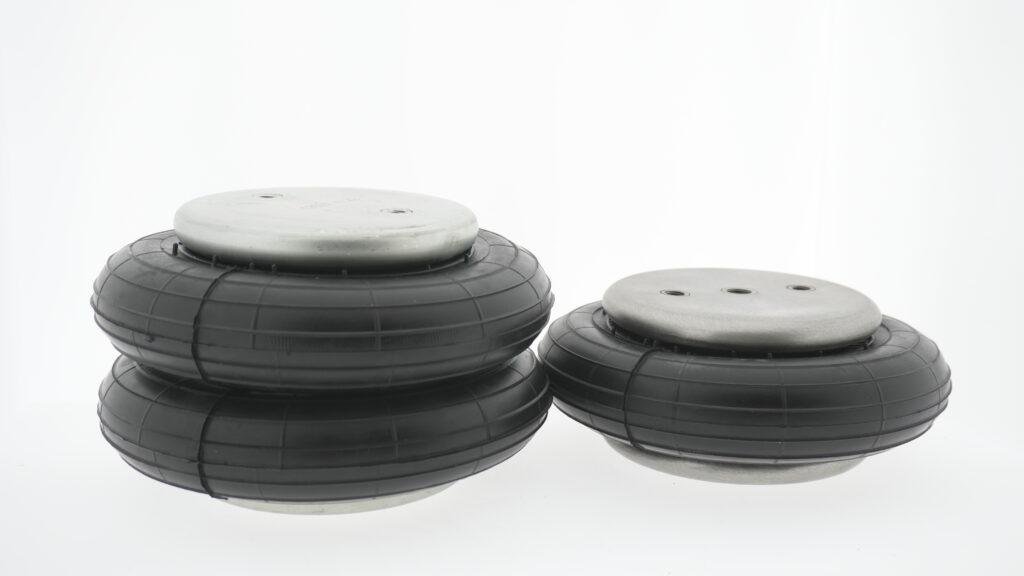
Understanding Stroke Length in Air Bellows
Stroke length refers to the maximum distance an air bellow can extend or compress during operation. This parameter is essential in determining the range of motion for pneumatic actuators, vibration isolation systems, and industrial presses. A well-calculated stroke length ensures optimal performance, durability, and safety. The stroke length is influenced by various factors, including convolution type, material composition, internal pressure, load capacity, and end closure design. Ensuring that an air bellow operates within its intended stroke range prevents mechanical failure and increases efficiency. Selecting the appropriate stroke length improves energy efficiency, system longevity, and operational stability. A correct balance between these factors guarantees consistent performance in demanding applications. Investing in high-quality air bellows with the right stroke length can optimize machine function and reduce maintenance costs. This makes understanding stroke length critical for industrial applications.

Factors Affecting Stroke Length in Air Bellows
Several factors influence the stroke length of an air bellow, directly affecting its operating range and efficiency. Convolution type plays a significant role—single, double, or triple convolutions determine flexibility and stroke capacity. The material composition of an air bellow affects elasticity, wear resistance, and temperature durability. Internal pressure influences expansion and contraction, impacting force output and stroke range. The load capacity directly determines the stroke length, as increased weight reduces movement flexibility. End closure design also matters—crimped, bead ring, or dismountable closures alter how an air bellow expands and contracts. Ensuring the correct stroke length requires understanding these factors and optimizing each to meet application requirements. Overextending the stroke length can lead to premature wear, while underutilizing it reduces efficiency. Proper selection and maintenance of air bellows improve performance, increase lifespan, and enhance system reliability for industrial applications.
Importance of Stroke Length in Industrial Applications
1. Precision Control
A precisely calculated stroke length ensures accurate displacement in industrial machinery, preventing misalignment and wear. Misalignment leads to mechanical stress, reducing air bellow lifespan and efficiency. Correct stroke control minimizes structural fatigue, enhancing precision.
2. Energy Efficiency
Optimized stroke lengths prevent excessive air consumption, lowering energy costs and improving operational efficiency. Controlling stroke range ensures balanced energy distribution within pneumatic systems.
3. Durability and Longevity
Overextending or underutilizing stroke length may cause premature failure of rubber bellows, leading to increased maintenance costs. Proper design enhances operational stability and prevents breakdowns.
4. Vibration Isolation
Correct stroke length maintains effective vibration isolation without compromising stability. This ensures reduced mechanical stress and extends equipment service life.
Choosing the Right Air Bellow Based on Stroke Length
Single-Convolution Air Bellows
Single-convolution designs suit applications requiring minimal stroke movement. Their compact structure allows low installation height and high-frequency vibration damping. They operate effectively under restricted space conditions while ensuring reliability.
Double-Convolution Air Bellows
Double-convolution designs provide balanced stroke flexibility and stability. They enhance misalignment absorption and are commonly used in medium-load actuators and industrial presses. The added flexibility enables better shock absorption and precise movement.
Triple-Convolution Air Bellows
Triple-convolution designs offer the longest stroke length for maximum extension. They are ideal for heavy-duty lifting and shock absorption. Their ability to handle angular movement makes them highly effective for dynamic applications requiring high adaptability.
Enhancing Stroke Efficiency in Air Bellows
Optimizing stroke efficiency improves performance, durability, and cost-effectiveness in industrial applications. Internal pressure regulation plays a crucial role in maintaining the correct stroke range. Choosing the correct convolution design based on load and movement requirements optimizes efficiency. Material quality ensures durability and prevents excessive wear, extending the lifespan of air bellows. Proper mounting and alignment maximize stroke potential and reduce mechanical stress. Over time, incorrect installation may lead to reduced operational range and premature failure. Industrial systems benefit from stroke optimization, as it enhances stability and reduces energy consumption. Ensuring the correct stroke length is critical for reducing downtime and maintenance costs. Businesses investing in well-calculated stroke length solutions experience increased productivity and system reliability. The right stroke length selection significantly enhances equipment performance and overall operational efficiency.
Understanding and selecting the appropriate stroke length in air bellows is crucial for maximizing efficiency, durability, and performance. Whether used for industrial actuators, vibration isolation, or shock absorption, the correct stroke length ensures optimal function. By considering design factors, material quality, and pressure control, businesses can significantly enhance the lifespan and effectiveness of their air bellow systems. The correct stroke length choice helps prevent mechanical failures and extends service life. Ensuring proper calculations when selecting air bellows improves stability and guarantees operational efficiency. Investing in high-quality air bellows tailored to the correct stroke length reduces long-term costs and enhances industrial reliability. Proper stroke management also prevents excess wear and ensures seamless system integration. By implementing the right stroke length strategy, industries benefit from increased productivity and improved machine performance. A well-selected stroke length ensures enhanced safety, reduced downtime, and efficient operation in demanding applications.
